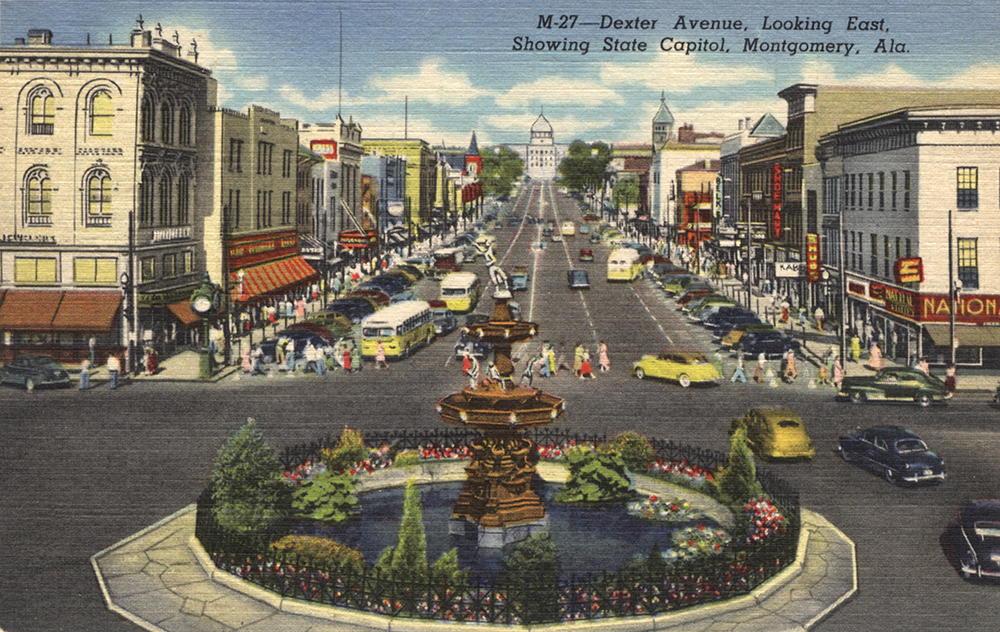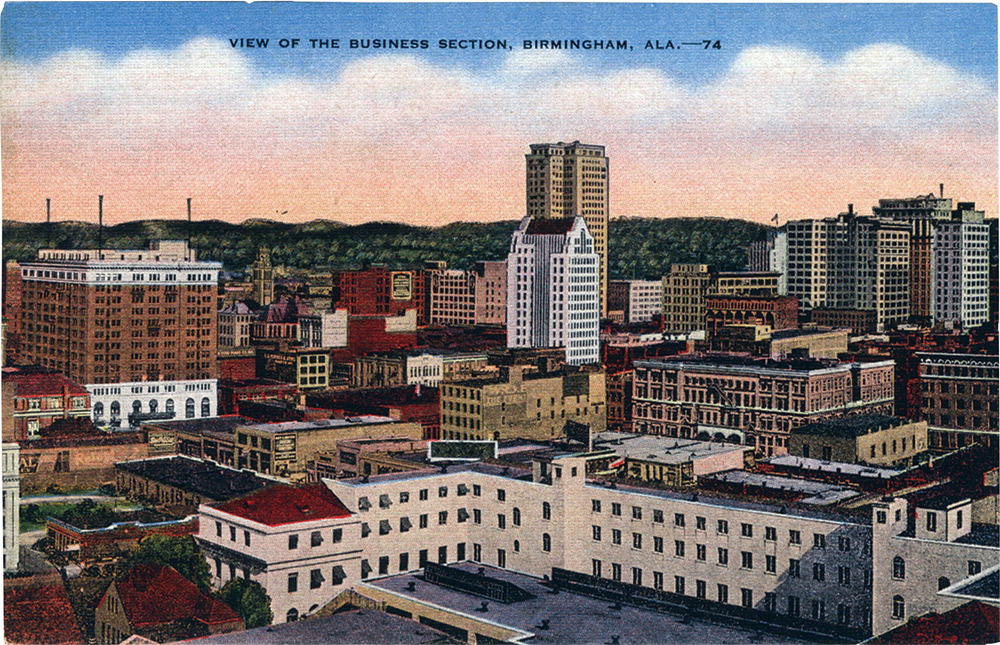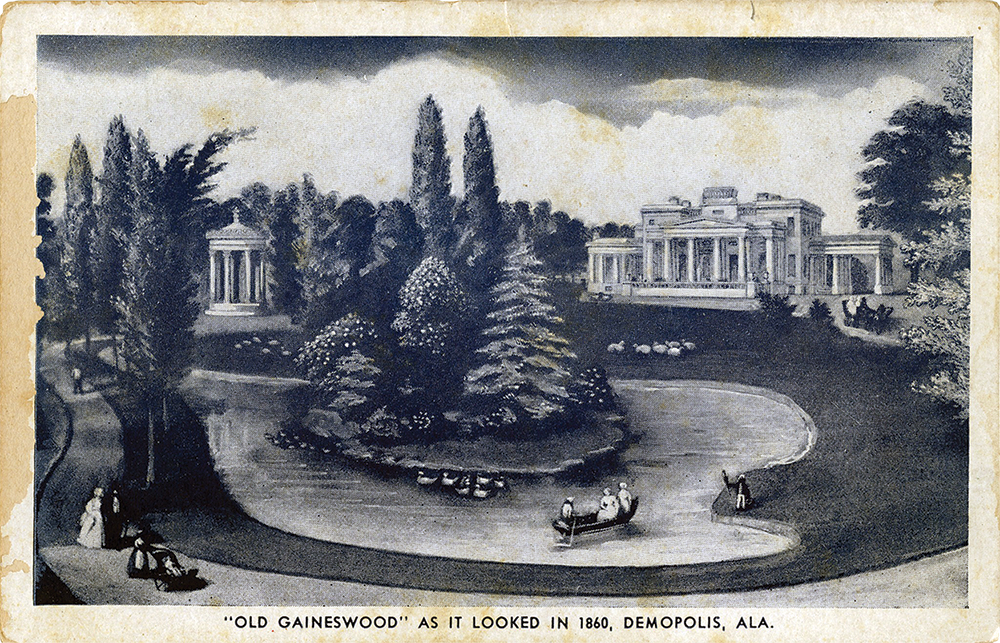
New book chronicles Alabama’s past through vintage postcards
By Emmett Burnett
It’s probably been awhile since you’ve received a handwritten postcard, because open-faced letters can be paraphrased with a Vivien Leigh-Clark Gable movie line: “Look for it only in storybooks, for it is gone with the pen.”
Or maybe not.
A newly released book, Greetings from Alabama: A Pictorial History in Vintage Postcards, captures memories, slices of life, and nostalgic times when text messaging required pencils. But the book’s 1800s to mid-20th century postcards convey more than “having a good time; wish you were here” sentiments. Wade Hall’s collection is a glimpse into our thinking, attitudes, and the way we were, in Alabama, before Facebook.
Over 400 postcards are represented in the work, published this fall by NewSouth Books (224 pages; $24.95). Topics include big city attractions, small community events, World Wars and peacetime. It chronicles vacation destinations, industrial giants, military installations, and postcard categories far exceeding “See Rock City.”
Notes of historical significance, like Montgomery’s State Capitol, Enterprise’s Boll Weevil, Selma’s Edmund Pettis Bridge, and Mobile’s Mardi Gras are featured. There are old churches, stately courthouses, majestic hotels, and forever on guard Confederate statues. Postcard photos depict topics still with us today and those that have been gone for decades.
But it’s not just a list of quant pictures. “Physical attractiveness was not the top of our selection criteria,” notes the book’s co-editor, Dr. Nancy B. Dupree, about the labor of love she and co-editor Dr. Christopher Sawula researched. Both are curators with the University of Alabama Libraries and wrote the cards’ captions for the book.


“We were more interested in what the cards depicted and what was interesting,” Dupree says, about the selection process. “We were not necessarily interested in just what was pretty.”
Greetings from Alabama draws from the collection of the late Wade Hall, the book’s posthumous author. A Bullock County native, Hall was a philanthropist, writer, poet, interviewer, and postcard collector of thousands. “He traveled the state, visiting estate shows, garage sales, secondhand stores to buy entire lots – crates of postcards,” Dupree says. But at one point he had a setback.
“Hall was traveling with a car full of postcards when he stopped at a gas station, went inside, but left his vehicle unlocked and motor running,” says the editor. When he returned the postcards were gone and so was the car, neither ever seen again.
But even with the loss, Hall accumulated an estimated 10,000 cards, which he later donated to his college alma maters: Troy University (Troy State Teachers College) and the University of Alabama. Of the thousands, about 400 were selected for the book.
“It’s like a treasure hunt,” Sawula says. “It shows what Alabama looked like in the early 20th century, before and after modern industrialization, during World War II, and other times throughout our history.”
Hall’s postcards include Dothan’s original post office, Birmingham’s coke mines, Mobile Bay workers unloading cargo barges, and an early forerunner of Bryant-Denny Stadium, proudly seating 20,000 people (today it holds 100,000). “They wanted us to know, this is how we cheered football back then,” Sawula says. “This is how we played, worked, lived.” And these are the themes featured in the book.
There are architectural marvels: great dams, bridges, and old churches. “Modern” previous century roads are depicted, like those in Mobile and Montgomery, paved with state-of-art oyster shells. Fairhope and Daphne were promoted as beach destinations. Lake Guntersville touted itself as a boat racing capital.
As seen in the cards, the Vulcan statue was a World’s Fair attraction before someone in Birmingham said, “let’s put him on a mountain.”
“Part of the fascination of these cards is seeing what people were proud of back then,” Sawula says. The growth of Tuskegee, rise of Gadsden, and birth of Huntsville’s Rocket City was big news, back in the day.


The selected postcards’ written messages are not included in the book, due to privacy issues. But researchers could not resist reading some. Many are insightful, some are funny. One older woman, visiting an Alabama city, wrote, “I have not seen anything that I would enjoy yet but hope I will soon.” Sawula laughs, “It may have been an interesting scene but that doesn’t mean the person enjoyed the experience.”
As for the purveyor of postcards, Wade Hall, after spending most of his life in Kentucky, died in 2015. He is buried near Union Springs. “I met him once,” Dupree recalls. “He was a pleasant man. He probably wanted his collection published as a book.” And it is.
Greetings from Alabama reminds us of the state we live in and a state of mind. Both changed in many ways over the years, yet in many ways, remains the same. The Vulcan, once the toast of the World’s Fair, is still an icon of Birmingham. Mardi Gras floats, once pulled by horses, currently parade by gas engines. The Edmund Pettus Bridge is a National civil rights landmark, and civil rights issues are still with us. World War II ended but new battles continue.
And the more things change, the more they remain the same. It’s all in the cards.
Greetings from Alabama is available at bookstores or from NewSouth Books, 334-834-3556, www.newsouthbooks.com/greetingsfromalabama




